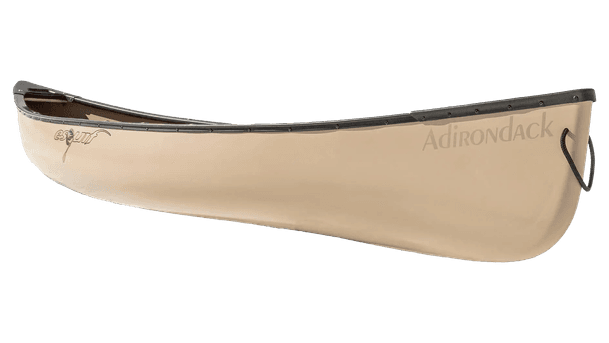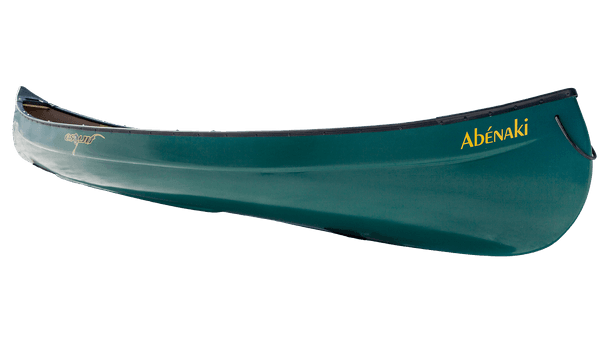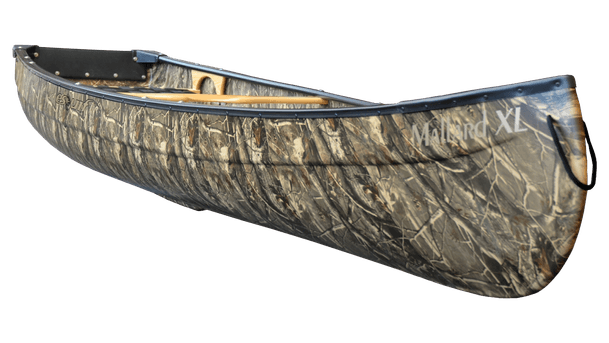- Home
- Gear & Reviews
- J200
J200

J200 Description
The J200 is a canoe brought to you by Crozier Racing Canoes. Read J200 reviews or submit your own review to share with the paddling community. Check out a few other canoe recommendations below or explore all canoes to find the perfect one for you!
Crozier Racing Canoes
J200 Reviews
Read reviews for the J200 by Crozier Racing Canoes as submitted by your fellow paddlers. All of the reviews are created and written by paddlers like you, so be sure to submit your own review and be part of the community!
Short version: TL;DR – The J200 is one of my all time…
Full Review:
I've had a 1988 Crozier J200 for 2 years now. When I bought it, the first thing that I noticed about the boat is its superb build quality. Even for the late 80's, this boat is built light and strong! Crozier's vacuum bagging was top notch and led to a top quality boat. The fabric he used (at least during this time period) seems more substantial than Wenonah's Kevlar. It employs the diamond shaped core with side ribs design to stiffen the boat. Even in the areas between the ribs, the single layer fabric is very rigid and seems stronger than comparable Wenonah's.
After a couple years of paddling this boat, a few things stick out at me:
1. Its very (very very) hard tracking. Many would say like its on rails. Obviously you paddle a boat like this with sit and switch style and minimal to no corrective strokes. Once I'm up to cruising speed, I can get 3-8 strokes per side and maintain a straight course. Even from a dead stop, you can still get 3-4 strokes per side before you have to switch. During a race, I average 3-6 strokes per side probably. Anyways, the point I'm making is that it tracks very very straight. Even compared to other race boats like a J203, V1, or DIIIxx the J200 is still harder tracking. This is generally good for marathon style racing since you are traveling a long distance in a relatively straight line; there aren't a lot of small, twisty creeks in marathon canoe racing.
The only way to get the boat to turn is leaning it…aggressively. If I paddle carefully and keep the gunwale near the water and do stern draw strokes all the way through a 180* buoy turn, I bet I can do it as tight as a 2-3 boat radius. It certainly takes more to turn than a MNII or Jensen 18. Its actually fairly comparable to a V1 with a 'less than pro' bowman doing a crossbow or post, although you have to be fairly skilled in the J200 to keep it heeled through the turn to execute a tight turn. Even with the boat heeled over, the stern is fairly sticky. I wouldn't want to take it down a narrow or windy stream unless I added a rudder. (its sacrilege I know, but I intend to add a Starbor rudder system to the boat this year just so I can take it out when its very windy (like 15+ mph). I couldn't race with the rudder obviously, but it's a windy year in MN and I'm at home more than I would like because of the wind. This boat does pretty well in it due to its low profile and hard tracking, but paddling solo in a strong wind sucks anyway you look at it, so I think I'll add one later this year).
Heeling the boat brings up an interesting point: the stability curve. I need to divide this into 2 categories, the first being "Stock" from Crozier. The stock seat was 7" from floor to butt. With the original setup, initial stability was very poor. You could feel a seagull's wake underneath you. Seriously, you could feel a fish fart a half mile away. Secondary stability firmed up very quickly as with any 'winged' boat. The secondary stability was solid until you hit 'the cliff'. Once the wing reached maximum displacement (read 'point of final stability') the boat would fall out from under you like a trap door. I have a fast, instinctual brace that I've engrained into my muscle memory but even with bracing being like 2nd nature, I flipped this boat my fair share of times. It wasn't always fun.
Because 'The Stability Cliff' caused me to swamp in 2 consecutive races, I had had enough. I cut out the seat mount and lowered it 2.5" so that my butt was 4.5" off the floor. The old guys (who I respect greatly and normally take their word as God) told me that lowering the seat would make it feel like a bathtub or lead to a worse angle of attack on the paddle, but I think the benefits GREATLY outweigh any negatives. Lowering the seat did prompt me to whack the side of the boat with the paddle a couple times before I got used to the new height as the old guys suggested. Also, getting back in the boat with a Capistrano flip was a little trickier with the very low seat, but here's the payoff that makes it all worth it: the boat has SOLID primary and secondary stability, and 'The Cliff' turned into a moderate hill.
With the lowered seat, primary stability now feels like a MNII or Jensen 18. Its stable enough that I throw Rookies in it and just tell them to go at it. The secondary stability got equally better and I can get the gunwale to the water and hold it there only semi-precariously. Also, 'The Cliff' is no longer an instant drop off. Once you hit the point of final stability (read 'you are getting wet unless you brace') the boat no longer instantly falls out from underneath you. Don't get me wrong, you still have to act fast and have a solid, instinctual brace that you don't think about, but with the lower seat, you have a half second to realize you're in trouble and start to brace. More than once I've had water coming over the gunwale, about to swamp and saved it with an epic brace. If the seat were higher, I would have been swimming by the time I muttered some profanities to myself. This more gradual fall out is much appreciated and lets me be more aggressive finding the limit of heel.
To that end, the boat is now so stable that I had to add 3" neoprene foam on the sides of the paddling station because the boat became so stable that when leaning it hard, my butt would slip off the side of the seat, sending me to the low side of the boat putting my center of gravity wayyyy off center, and no amount of bracing will save you then. In 1989 (the year after my boat) Everett tucked the gunwales in at the paddling station from 20" to 17". In the skinnier boat, you might be able to get away without the foam, but in mine I had a good 2-3" on each side of me. With the foam now securely holding me in the center of the boat, I can heel the boat to the gunwale with relative security. With the high seat, I would cautiously paddle as fishing or ski boats passed and be ready to brace at a moment's notice. Now, I wait for ski boats to pass and ride their waves like a surfer. The other night a ski boat went down the whole lake right before it planed out leaving a huge 2' wake behind it. In addition to being fairly large (safely 18", probably getting closer to 2' when they got to shallower water) the waves were tightly packed. This meant that my bow and stern were buried in the wave and the center wings were almost dry at times. Normally this is a recipe for a swamp and recovery, but I rode the entire length of the lake like this with only 2 braces needed! It was SUPER fun! During that run, I recorded 9.7mph a couple different times. That's smokin'! With the stock seat height, there is no way (even with my current skills) I could have rode those waves. This large increase in stability translates directly to being able to better control the boat during a mass start. With the large and confused waves at the start of a race, controlling the boat (or just keeping it upright) can be tricky to say the least. The lower seat helps a lot because I can heel the boat more before approaching the point of final stability leading to better directional control and less bracing. Also, when you're worried about tipping, your power, form, and cadence suffer.
The only criticisms I have for the J200 are…The center thwart is basically on top of the seat when the seat is all the way back. I'm a medium-big guy (6'1" 190 lbs, athletic build) so I need the seat all the way back to get the boat trim. With the seat all the way back, the center thwart grinds into your back and impedes motion. Because of this, I unscrewed the thwart and moved it 4" rearward. Now I don't touch it and can even lean back a little during buoy turns or for stretching. Wenonah J boats are like this too and for the life of me I can't understand why they don't move the damn thwart back another 3-4"! Next, I think the boat is soooooo much more fun with the lower seat. It should have been around 5" off the floor from the factory, not 7". I encourage everyone everywhere to cut their seat down, even if you are happy with your J boat as is. It makes the boat much more fun and better paddling. You don't even know what you're missing (and if you don't like it, you can buy rail spacers for $12 from J&J Canoe to get the seat back to stock height) Last complaint: the foot brace system sucks. Its an easy fix, but the one that comes with the boat was junk. It was flimsy and nearly impossible to adjust. I bought a new sliding system from Wenonah for $35 and it works like a charm.
Overall, I will have a very hard time finding a solo boat I like more than my (slightly modified) J200. I paddled a Savage River DIIIxx briefly and think it handled a little better and was probably a little faster, but they don’t come up on the used market (ever). Since they are based on a newer design and are more comparable to a J203, its not really a fair comparison either.
In conclusion, I know it seems like I love gushing about Crozier boats, but they really deserve it. There is almost no information on the web about them. People in the racing world know how nice they are, but most don't. If you have the chance to own a Crozier, get it. You won't regret it.
PS: Everyone, everywhere, in any racing canoe, lower your seats an inch or 2! It makes such a big difference.



